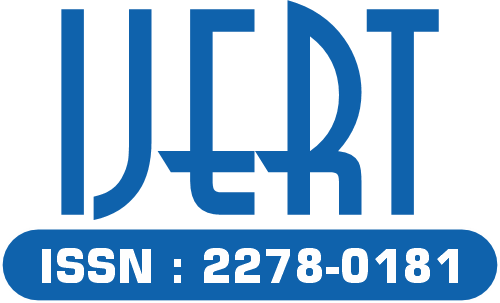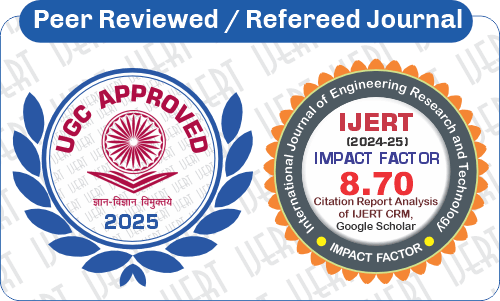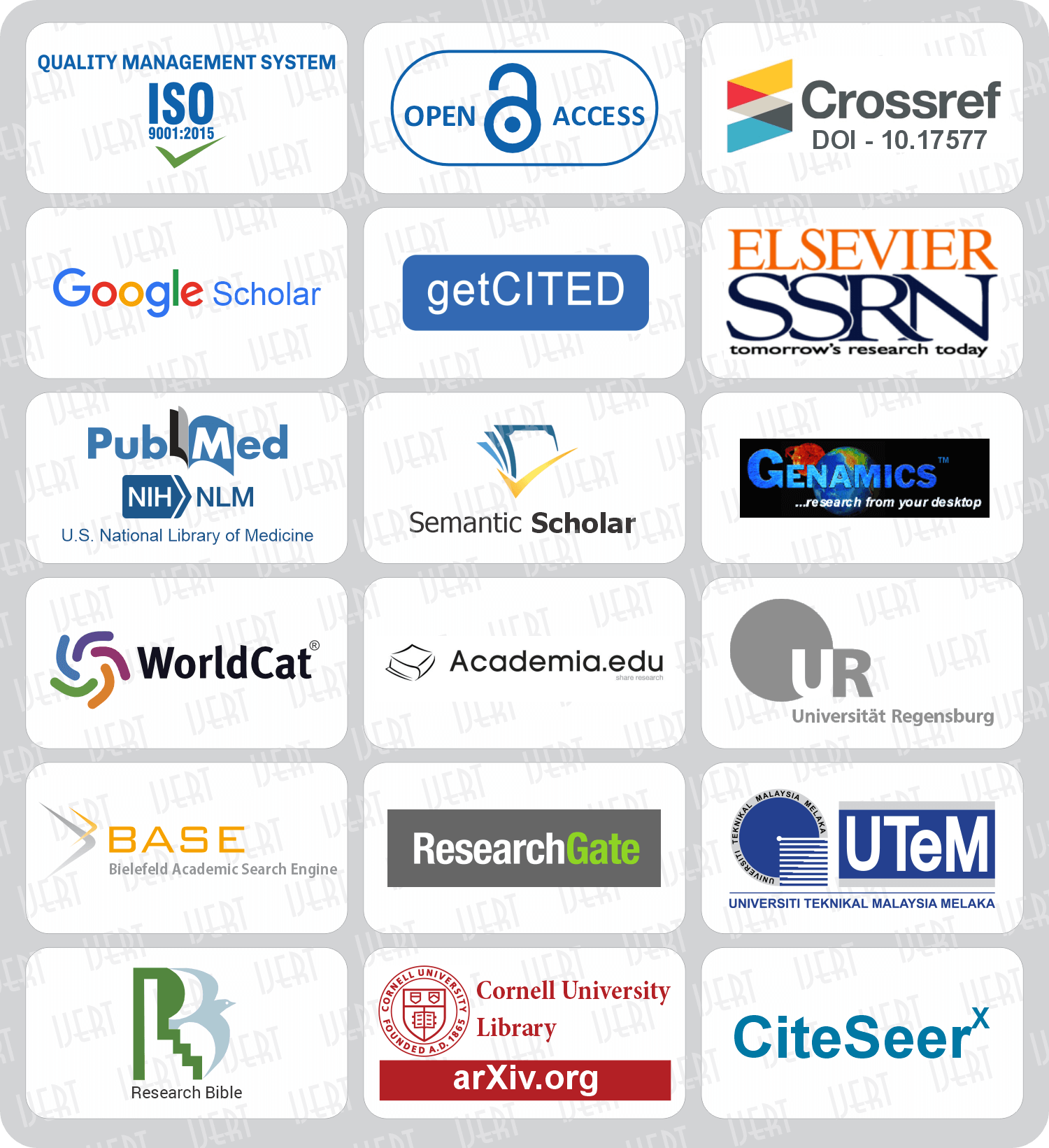 DOI : 10.17577/IJERTV3IS120707
DOI : 10.17577/IJERTV3IS120707
- Open Access

- Total Downloads : 236
- Authors : Mr. Katkar Mahendrakumar Madhukar, Prof. Gandhare B. S. , Prof. Kulkarni P. P.
- Paper ID : IJERTV3IS120707
- Volume & Issue : Volume 03, Issue 12 (December 2014)
- Published (First Online): 23-12-2014
- ISSN (Online) : 2278-0181
- Publisher Name : IJERT
- License:
 This work is licensed under a Creative Commons Attribution 4.0 International License
This work is licensed under a Creative Commons Attribution 4.0 International License
Effect of Manufacturing Tolerance on Pressure Vessel
Katkar M. M.
ME (Design) Mechanical Dept. SKN Sinhgad College of Engg. Pandharpur, Solapur, India
Prof. Gandhare B. S. Asst. Prof. Mechanical Dept
SKN Sinhgad College of Engg.
Pandharpur, Solapur, India
Prof. Kulkarni P. P. Asst. Prof. Mechanical Dept
SKN Sinhgad College of Engg.
Pandharpur, Solapur, India
AbstractAfter literature review and interviewing with expert they suggested gaps where one can work in pressure vessel domain especially on influencing factors related to pressure vessel cylinder design. Influence of manufacturing tolerance, heat treatment process parameters and material composition on Cylinder. Influence of welding methods and subsequent stress relieving processes on some pressure vessel cylinder. Here in this paper manufacturing tolerances are considered and relation between the manufacturing tolerance on strength and cost is obtained. In actual practices it is not possible to manufacture the pressure vessel with the defined dimensions. The tolerance variation is affecting on strength and cost of pressure vessel. For getting the relationship between the tolerance, strength and cost of pressure the FEA, RSM, ANOVA are used.
KeywordsPressure Vessel, strength, cost, Tolerance, FEA, RSM
INTRODUCTION:
In the design stage the manufacturing uncertainty [1] is constriant that to be considered. For the pressure vessel(PV) tolerance may be given to the thickness or any geometriacal dimensions[3]. In the PV different manufacturing processes are carried out and tolerances are considered at each stage. Auther used the different methods like FEA regression and neural network. Here effect of tolerance is observed on the strength and cost.[9]
-
Effect on Strength:
1 INTRODUCTION:
To study the effect of tolerance on strength the FEA and Optimization techniques are used. In this modeling of thin PV in FEA package ANSYS 14. Initially hoop stresses (HS) are obtained by varying the design parameters Thickness (T), Length (L), inner radius (Ri) and Pressure (P). For getting HS at different intervals of design parameter, Response Surface Method (RSM) is used. RSM is type of probabilistic design. 30 simulations are run for getting 30 values of HS. Following methodology is adopted for getting relationship between HS and tolerance. At the end non linear relationship between HS and tolerances is obtained.
Initially relationship between hoop stress and Input parameters is obtained by using FEA.
i.e. Hoop stress = f (T, L, Ri, P)—————-(1)
Mathematically for the thin vessel formula [16] is Hoop Stress = P*R/(2*T) ——————(2)
Equation (1) is validated by using equation (2)
It shows that obtained relationship is in good agreement. It can be said that written program in FEA software is validated.
Moreover same program is used for next simulation which is to be run for getting the relationship between Hoop Stress and tolerance.
i.e. Hoop Stress = f (tolerance)
2 TOLERANCE:
Following table shows tolerance limit of parameters are referred from the industry and ASME Sec VIII Div 1 & II [11] [12] for case study.
Table 1 Tolerance Parameters
Sr.
No.
Parameter
Mean
value
2
Tolerance
1
Pressure
0.2 N/mm
-0.1 to +0.1
2
Radius
1000mm
-3.0 to +3.0
3
Thickness
6 mm
-0.7 to +0.7
4
Length
5000mm
-5.0 to +5.0
1000 simulations are carried out at any interval within 1000 and Hoop Stress is obtained. Output data of simulation is given as input to non linear relation between Hoop Stress and tolerance.
-
FINITE ELEMENT MODELING (FEM):
Fig. 1 Pressure Vessel model
Modeling of pressure vessel is drawn in ANSYS 14 and it is meshed by using 4node tetrahedron (solid 285), as tetrahedron supports linear and non linear elasticity and plasticity. Also it supports contact pair by using rigid elements such as CONTA 178 and TARGET 176 as shell elements does not support welding by using rigid elements.
Model is meshed and 15893 number of elements and 5443 nodes are generated. Tetrahedron element is used.
Fig. 2 Meshed model
Moreover, response surface modeling by using central composite design is carried out in ANSYS probabilistic design module. Total 30 simulations with variation of input parameters are solved.
Fig. a) Tolerance P, Di & Ri vs. HS
Fig. b) Tolerance P, Di & T on vs. HS
Fig. c) Residual stress
Fig. 3 Contour plot of stress vs. tolerance
-
RESPONSE SURFACE METHOD: (RSM)
Following output values of hoop stress are generated with respect to input parameters and these are compared with hoop stress obtained by standard equation for thin cylinder.
Table 2 DOE table of Hoop stress(N/mm2)
Sr. No.
P
Ri
T
L
ANSYS
Hoop stress= P Ri/2T
% error
1.
0.3
997
6.7
4995
24.0109
22.3209
7.038471
2.
0.3
997
5.3
5005
29.90698
28.21698
5.650855
3.
0.1
1003
5.3
5005
10.49226
9.462264
9.816756
4.
0.1
997
5.3
4995
10.43566
9.40566
9.870003
5.
0.1
997
6.7
5005
8.370299
7.440299
11.11071
6.
0.3
1003
6.7
5005
24.14522
22.45522
6.999314
7.
0.2
1000
6
5000
18.35667
16.66667
9.206464
8.
0.1
1003
6.7
4995
8.395075
7.485075
10.83969
9.
0.3
1003
5.3
4995
29.29679
28.38679
3.106142
10.
0.2
1000
6
5000
18.35667
16.66667
9.206464
11.
0.2
1000
6
5000
18.35667
16.66667
9.206464
12.
0.2
1000
6
5000
16.7
16.66667
0.199601
13.
0.2
1000
7.4
5000
15.20351
13.51351
11.1158
14.
0.2
1000
6
5000
18.35667
16.66667
9.206464
15.
0.2
1000
6
4990
18.35667
16.66667
9.206464
16.
0.2
1006
6
5000
18.45667
16.76667
9.156583
17.
0.4
1000
6
5000
35.02333
33.33333
4.825355
18.
0.2
1000
6
5010
18.35667
16.66667
9.206464
19.
0.2
994
6
5000
18.25667
16.56667
9.256892
20.
0.2
1000
4.6
5000
23.42913
21.73913
7.213243
21.
0.1
997
5.3
5005
10.50566
9.40566
10.47055
22.
0.2
1000
6
5000
17.76667
16.66667
6.19137
23.
0.2
1000
6
5000
17.76667
16.66667
6.19137
24.
0.3
1003
5.3
5005
30.07679
28.38679
5.61895
25.
0.3
1003
6.7
4995
25.14522
22.45522
10.69786
26.
0.1
1003
5.3
4995
10.59226
9.462264
10.66816
27.
0.1
1003
6.7
5005
8.255075
7.485075
9.327596
28.
0.1
997
6.7
4995
8.210299
7.440299
9.378465
29.
0.3
997
6.7
5005
23.0909
22.3209
3.334648
30.
0.3
997
5.3
4995
28.98698
28.21698
2.656365
It is observed that there is maximum 11% deviation in results obtained by FEA and Standard equation. Above data is analyzed in ANSYS software and following relationship is obtained in between input parameter and hoop stress.
Hoop Stress = 0.353955 + 84.0715 P + 0.01682 Ri – 2.85665 T – 2.20707e-017 L
-
RSM analysis: Table 3 RSM values
Factors: 4 Replicates: 1
Base runs: 30 Total runs: 30
Base blocks: 3 Total blocks: 3
Two-level factorial: Full factorial
Cube points: 16
Center points in cube: 4 Axial points: 8
Center points in axial: 2 Alpha: 2
Regression Analysis: STRESS versus P, Ri, T & L
The regression equation is
Hoop Stress = 0.353955 + 84.0715 P + 0.01682 Ri – 2.85665 T – 2.20707e-017 L
Predictor
Coef
SE Coef
T
P
Constant
0.354
179.201
0.002
0.998
P
84.0715
1.868
44.9945
0.000
Ri
0.0168
0.057
0.2968
0.769
T
-2.8566
0.243
-11.7627
0.000
L
-0.00
0.034
-0.00
1.000
The obtained data is used for regression analaysis and equation is found.
S = 0.832822 R-Sq = 98.86% R-Sq(adj) = 98.67%
PRESS = 27.5706 R-Sq(pred) = 98.18%
-
RELATIONSHIP BETWEEN TOLERANCE AND STRENGTH
Non linear regression has been carried out in mini tab. By using data obtained from finite element analysis. Following non linear relationship is obtained in between hoop stress and tolerance.
Fig. 4 scatter plot of hoop stress vs. tolerance
Fig.4 shows nonlinear relation between tolerance and hoop stress. It is observed that there is more scatter in hoop stress value when tolerance varied from 0.1 to 0.4 mm. Red colour lines in graph represents polynomial curve. Uncertain data obtained from analysis is fitted on line of 21 degree. Also there is more variation curve shape in the region of 0.1 mm to 0.4mm. There is less variation in curve in region -0.6 to
-0.2 mm. It is observed that hoop stress uncertain with respect to tolerances. Therefore non linear regression is carried out and following relationship is obtained which shows uncertainty in hoop stress with respect to tolerance value.
Hoop Stress = 1 – 1 / (Tolerance^ 0.008)
B. EFFECT OF TOLERANCE ON COST
-
Introduction:
Cost is the main parameter from the manufacturer as well as from the customer point of view. So this must be considered at the design stage only. Few authors [5][10] have worked on the cost.
To study the effect of manufacturing tolerance on the cost of pressure vessel the same live case study is taken as stated previous. The optimization technique i.e. RSM and ANOVA are used.
Here for the cost calculation the different cost are considered these are raw material cost, manufacturing cost and other expenditures. By combining these cost the total cost is calculated and the graphs are plotted which are showing the relationship between the tolerance and cost.
The tolerance is given to the plate or sheet i.e. input parameter of PV. For the plate the input parameters are length (L), width (W) and thickness (T) are considered. Considering the variation in plate dimensions the effect on cost is plotted and predicted.
-
Tolerance: Here to study the effect of manufacturing tolerance the sheet is considered. The tolerance on the sheet is taken into consideration. The tolerance given to sheet is studied and effect on the cost is determined with best optimized values. Sheet is used to manufacture the pressure vessel. Tolerance for the sheet is considered. The parameter where tolerance is to be considered for the sheet is Length, width and thickness.
Table 4 Parameters and levels
Level(tolerance) Parameter
-1
0
+1
1. Length
12.4
12.5
12.6
2. Thickness
5
6
7
3. Width
2.45
2.50
2.55
-
DOE table for COST:
DOE table for the cost is as shown in the table 6
-
-
-
Analysis of Variance for total cost
Table 5 RSM values
Source
DF
Seq SS
Adj SS
Adj
MS
F
P
Regressi
on
3
468435710
1
468435710
1
156145236
7
14578.0
6
0
Linear
3
468435710
1
468435710
1
156145236
7
14578.0
6
0
L
1
10615438
10615438
10615438
99.11
0
W
1
66346490
66346490
66346490
619.43
0
T
1
460739517
2
460739517
2
460739517
2
43015.6
4
0
Residual
Error
16
1713756
1713756
107110
Lack-of-
Fit
11
1713756
1713756
155796
Pure
Error
5
0
0
0
Total
19
468607085
7
S = 327.276 Press = 4056228
R-Sq = 99.96% R-Sq (Pred) = 99.91% R-Sq (Adj) = 99.96%
The Regression Equation Is
Total cost = – 202578 + 10303 L + 51515.6 W + 214648 T
-
SURFACE, CONTOUR AND OPTIMIZATION PLOTS:
-
The surface, contour and optimization plots are drawn in the fig. 5
In general from this plots it is clear that the value of parameter for the minimum cost should be selected at the bottom of left side.
Fig.(a) surface plot
Fig.(b) contour plot cost vs T,W
Fig.(c) contour plot cost vs T,L
Fig.(d) optimization plot
Fig. 5 Plots
Table 6 DOE values for the cost
|
Sr. No. |
L |
W |
T |
Weight |
Sheet cost |
Mfg Cost |
Other |
Total Cost |
|
1. |
12.5 |
2.5 |
5 |
156.25 |
61328.125 |
45996.09 |
55000 |
162324.22 |
|
2. |
12.5 |
2.5 |
6 |
187.5 |
73593.75 |
55195.31 |
55000 |
183789.06 |
|
3. |
12.5 |
2.55 |
6 |
191.25 |
75065.625 |
56299.22 |
55000 |
186364.84 |
|
4. |
12.4 |
2.5 |
6 |
186 |
73005 |
54753.75 |
55000 |
182758.75 |
|
5. |
12.5 |
2.5 |
7 |
218.75 |
85859.375 |
64394.53 |
55000 |
205253.91 |
|
6. |
12.5 |
2.45 |
6 |
183.75 |
72121.875 |
54091.41 |
55000 |
181213.28 |
|
7. |
12.5 |
2.5 |
6 |
187.5 |
73593.75 |
55195.31 |
55000 |
183789.06 |
|
8. |
12.6 |
2.5 |
6 |
189 |
74182.5 |
55636.88 |
55000 |
184819.38 |
|
9. |
12.4 |
2.45 |
7 |
212.66 |
83469.05 |
62601.79 |
55000 |
201070.84 |
|
10. |
12.5 |
2.5 |
6 |
187.5 |
73593.75 |
55195.31 |
55000 |
183789.06 |
|
11. |
12.6 |
2.45 |
7 |
216.09 |
84815.325 |
63611.49 |
55000 |
203426.82 |
|
12. |
12.4 |
2.55 |
7 |
221.34 |
86875.95 |
65156.96 |
55000 |
207032.91 |
|
13. |
12.4 |
2.45 |
5 |
151.9 |
59620.75 |
44715.56 |
55000 |
159336.31 |
|
14. |
12.6 |
2.55 |
5 |
160.65 |
63055.125 |
47291.34 |
55000 |
165346.47 |
|
15. |
12.5 |
2.5 |
6 |
187.5 |
73593.75 |
55195.31 |
55000 |
183789.06 |
|
16. |
12.4 |
2.55 |
5 |
158.1 |
62054.25 |
46540.69 |
55000 |
163594.94 |
|
17. |
12.6 |
2.45 |
5 |
154.35 |
60582.375 |
45436.78 |
55000 |
161019.16 |
|
18. |
12.5 |
2.5 |
6 |
187.5 |
73593.75 |
55195.31 |
55000 |
183789.06 |
|
19. |
12.6 |
2.55 |
7 |
224.91 |
88277.175 |
66207.88 |
55000 |
209485.06 |
|
20. |
12.5 |
2.5 |
6 |
187.5 |
73593.75 |
55195.31 |
55000 |
183789.06 |
RESULT & DISCUSSION:
-
Main effect Plot for strength:
Fig. 6 Main effect plot for stress
From the main effect plot of hoop stress it is clear that the pressure is the main parameter to be considered in the design of pressure for considering
the stress. Pressure affects very rapidly on hoop stress. As thickness increases the stress decrease
Length and radius are comparatively insignificant parameters.
-
Main effect Plot for cost:
Fig. 7 Main effect plot for cost
From the main effect plot of cost it is clear that the thickness is the main parameter to be considered in the design stage for the cost calculation. Width and length are comparatively less signifcant.
CONCLUSION:
-
Non linear relationship is obtained between the tolerance, strength and cost.
-
Manufacturing tolerances plays very important role at the design stage of pressure vessel.
-
Pressure and thickness are the significant parameters which affects on the hoop stress of pressure vessel.
-
Thickness is affecting on the cost of pressure vessel.
REFERENCES:
-
M. Walker, P.Y. Tabakov, Design optimization of anisotropic pressure vessels with manufacturing uncertainties accounted for International Journal of Pressure Vessels and Piping 104 p.p. 96-104(2013)
-
R.C. Carbonari, P.A. Muñoz-Rojas, E.Q. Andrade, G.H. Paulino, K. Nishimoto, E.C.N. Silva, Design of pressure vessels using shape optimization: an integrated approach, International Journal of Pressure Vessels and Piping 88 pp. 198- 212 (2011)
-
Fuat Kara, Josef Navarro, Robert L Allwood, Effect of thickness variation on collapse pressure of seamless pipes Ocean Engineering 37 pp.9981006 (2010)
-
Scott Randall Hummela, Constantin Chassapis, Configuration design and optimization of universal joints with manufacturing tolerances Mechanism and Machine Theory 35 Pergamon pp. 463-476 (2000)
-
Alice E. Smith, Anthony K. Mason Cost Estimation Predictive Modeling: Regression versus Neural Network, the Engineering Economist (1996)
-
X. G. Ming, K. L. Mak, intelligent approaches to tolerance allocation and manufacturing operations selection in process planning. Journal of material processing technology 117 pp. 75-83 (2001)
-
Saeed Maghsoodloo, strengths and limitations of Taguchis contribution to quality, manufacturing, process planning, journal of manufacturing system vol 23 no2 (2004)
-
B. Oraee, A. Lashgari, A. R. Sayad, Estimation of capital and operation costs of backhoe loaders, SME Annual Meeting (2011)
-
Sergio Cavalieri, Paolo Maccarrone, Roberto Pinto, Parametric vs. neural networkmodels for the estimation of production costs: A case study in the automotive industry, Int. J. Production Economics 91 , science direct pp. 165177 (2004)
-
Antonio C. Caputo, Pacifico M. Pelagagge, Parametric and neural methods for cost estimation of process vessels, Int. J. Production Economics 112 , pp. 934954 (2008)
-
ASME Boiler And Pressure Vessel Code An international Code, VIII Division I (2010)
-
ASME Boiler And Pressure Vessel Code An international Code, VIII Division II (2010)
-
George E. Dieter and Linda C. Schmidt, Engineering Design McGraw Hill international edition, 4th edition (2009)
-
Mahajani and Umarji, Joshis Process Equipment Design, 4th edition (2011)
-
Design data book of Engineers, PSG College of Technology, Coimbatore (2010)
-
Design Of Machine Element, V. B. Bhandari, Tata Mc Graw- Hill Publication, 2nd Edition (2009)




